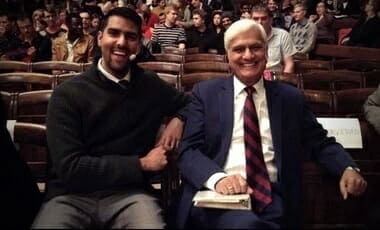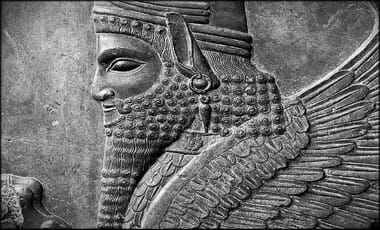Stephen A Smith LOSES IT After Realizing Democrats
~ And ~
The Liberal Media LIED TO HIM About Jan 6th!
My Facebook thoughts when posting the raw Smith video:
RPT’S LONG NOTE 》》THEN THE VIDEO DESCRIPTION…
… this is an admission by JUST BY THE FBI Not only that, but this is a SPECIFIC type of resource the FBI uses. They have others. But the DOJ has other resources that do the same thing. As one example, the U.S. Department of the Treasury probably had undercover members in the crowd, as well as other federal government resources. Easily over a hundred may have been in place leading the crowd into violence.
I WANT TO SAY AS WELL that many a black person I have watched video admissions from have come to the same conclusion as Stephen Smith, but based on the CHARLOTTESVILLE LIE the current “president” [eat your pudding Joe] and most Democrats as well as many friends I have who are on the Left believe to be true and spread this lie incessantly.
When these fine men and women are exposed to another part of the story — breaking the NYT, WaPo, LA Times, ABC, CBS, NBC, MSNBC, CNN, Chicago Tribune, NPR, on and on… spell over them or the word-of-mouth info friends or family regurgitate — they have left the Democrat Party.
Keep lying and labeling through the media and universities via CRT and DEI regular, hard working Americans as “sexist, intolerant, xenophobic, transphobic, homophobic, Islamophobic, racist, bigoted (S.I.X.T.H.I.R.B.)” The GOP will continue to make gains as the O.G. freedom party [At least the base is all about freedom, compare me and others to the Left’s base.]
I say WORD-OF-MOUTH for a reason. I will give an example of a similar situation regarding the Bible I have encountered often. Here is an old response from me via the dial-up-internet days.
- SOULCANNON SAID: “The fact of the matter is that the Bible is a document that is nearly 2000 years old (if you count the current calendar, which itself has been corrupted, warped, and stretched so many times) and the events and persons written within may have had a high probability of being fact.”
This is one of my favorite skeptical questions to deal with. Reason being is that the statement made is that the Bible being changed over time is “the fact of the matter is” (quoting SoulCannon, but not exclusively). SoulCannon, I will be talking to you for the simple fact that you made the statement, but I will really be speaking to the hundreds of people who really believe the above. So bear with me, okay.
Question posed to you: “Can you tell me where you got the information about the Bible being considerably changed and corrupted?”
MANUSCRIPT EVIDENCE
The Book of Isaiah! The Christian church’s earliest manuscript, of the book of Isaiah in complete form, it held in its grasp was dated at 900A.D.. But thanks to a shepherd boy, the Qumran caves coughed up a load of Biblical manuscripts and papyri fragments. One was a complete book of Isaiah that was dated at 100B.C.. After many textual scholars and critics went through this particular scroll, they found eleven letters different than the manuscript dated at 900A.D.. All the changes in the letter style did not change any of the meanings of the words they were found in. so after more than 1,100 years, a perfect example of the unchanging Word of God is exemplified.
The Jewish Masoretic scribes who would copy, say the book of Genesis, would know how many letters were in that book (76,064 Hebrew letters), he would literally count out the precise number of times each of the twenty-two letters in the Hebrew alphabet occurred in the text. He would also make notations on the margin of the page to assure that no letters were added or taken away. If even one letter was missed or added improperly, the master scribe would destroy the imperfect copy, lest an error creep into the holy text of the Word of God. This same process is still used in Israel to this day.
Some people think the Bible has been copied from the older manuscripts and papyri fragments and then copied into the Latin Vulgate; then into the Wycliff; then the Tyndale; then the Coverdale; then the Matthew Bible; then into the Great Bible, the Geneva Bible, the Bishops Bible, the Rheims, Douai, Authorized King James (KJV), American Standard (AS), New American Standard (NAS), New International Version (NIV), New King James Version (NKJV).
This is not the case. I will show two different ways of putting this controversy, which is nothing, more than not knowing the facts of the matter:
Greek and Hebrew Latin Vulgate = a = b = c = d = e = etc., etc. = New International Version (NIV); so by the time we reach our present age the Bible has been changed, much like the telling of a secret in a circle of children.
The New International Version actually used all the available (earliest) manuscripts and papyri fragments as their bases (which we will discuss later). They added [+] that information to the Rabbinical priests quoting scripture as well as the early church fathers. They then added that to the notes and commentaries on the Hebrew and Greek translators commentaries on the (still used) manuscripts they used to make past versions and copies.
So its: Early Greek Manuscripts + Early Translated Copies + Early Christian Quotes + Papyri Fragments + Early Notes and Commentaries = New International Version (NIV)
In other words, such playing the “game of telephone” thinking is easily overturned with facts. Such myopic beliefs are easily refuted, and many people begin to question their sources of information that warp their thinking. The same is happening in the political spectrum. Which is why my site is called RELIGIO-POLITICAL TALK
Stephen A. Smith revealed on his show that there were 26 FBI informants in the crowd on January 6th when the Capitol was stormed and says that he’s sick and tired of finding something else that the Democrats have lied about.
He highlights Kamala and Democrats claiming that Trump was a threat to democracy when it turns out Trump was right about this all along being rigged.
Watch below — Via, THE RIGHT SCOOP:
Stephen A Smith is sick of defending Democrats after ‘conspiracy theories’ continue to come true, like FBI informants instigating violence during January 6th:
“The news comes amidst a bombshell report from the Justice Department that revealed the FBI had at least 26 confidential… pic.twitter.com/q8xskoMp6H— Eric Abbenante (@EricAbbenante) December 15, 2024
















